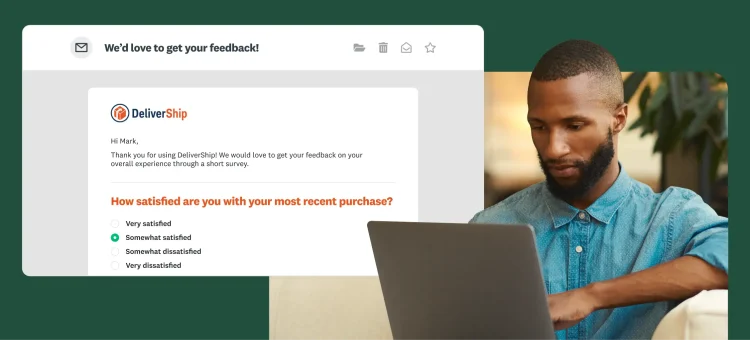Leading B2B brands understand the value of data and use it often to produce content that stays top-of-mind with a target audience. One of the best ways to find data to support a particular point or story angle is to conduct your own market research.
In the past, primary market research has been an expensive, lengthy exercise that often produced results that were quickly outdated. However, companies today are harnessing DIY market research as a way to quickly and cost-effectively collect fresh, topical insights that elevate the quality and value of content marketing efforts.
Here are 3 real-world examples of how leading companies used DIY research for successful content marketing.
1. Brex created proof points for a product launch
Most brands focus considerable time and resources on developing a value proposition that will appeal to a particular target audience. Companies know it’s important that messaging is credible, but often don’t take the step of backing claims and messages with proof.
Fintech company Brex understood the importance of testing a message before investing in a significant marketing effort.
The company was rolling out its first corporate card integration with leading enterprise resource planning (ERP) solution NetSuite. It turned to DIY market research to create a value proposition and trade show presentation for a new product launch.
Aliza Edelstein, Director of Product, Partner & Content Marketing, wanted to test the selling point that users “could take back control of their corporate card and shave hours off the month-end book close.” She hoped to obtain data that backed up the statement, instead of simply claiming that Brex’s card and system would deliver a better and faster experience for customers.
Using a combination of qualitative and quantitative research, Edelstein's team tested 3 key benefits of their value proposition: efficiency, reducing human error, and getting more accurate data. With a potential creative execution in mind, they also wanted to learn whether their audience would find the term “bean counter” offensive.
Edelstein's team conducted live, in-depth interviews with finance and accounting leaders. From these findings, the Brex team crafted a quantitative survey, which they sent to a panel of 292 finance and accounting professionals. In just 2 days, Edelstein collected survey results—and uncovered insights that supported the team’s value proposition.
For the trade show presentation, the team created a research report highlighting results in a consumable, friendly format. These were included in seat drops before the presentation, along with jelly beans, in an engaging play on the “bean counter” idea.
Edelstein said that the key to leveraging the research insights is telling a compelling story.
"Transform your best data points into a narrative, and distribute it across different areas of your business. SurveyMonkey made it so much easier for us to do that…and streamlined the process from concept to execution."
Aliza Edelstein, Director of Marketing, Brex
2. IBM leveraged primary research in thought leadership content
IBM’s think tank, the Institute of Business Value, is all about bringing innovation to market; both for IBM and for other companies. Continuous primary research is the engine behind the thought leadership content the institute delivers to market as books, articles, blogs, and more.
“We need to demonstrate that we understand the future,” said Dave Zaharchuk, Research Director for the Institute. “IBM has been around for over a hundred years, so our clients look to us to bring innovation to specific business processes within their organizations.”
But designing, fielding, and analyzing market research can take a lot of time, making it difficult to get fast access to market insights. “Once we’ve identified the need for the information, it’s important to quickly get a survey out in the field and to the audience we want to target.”
SurveyMonkey Audience gives the institute access to more than 50 million people worldwide, along with powerful targeting capabilities so they can create a panel based on demographics, geography, and professional profiles.
"SurveyMonkey Audience allows us access to the expertise and the panels we need in order to turn around insights so we can publish quickly and get the insights to our clients more quickly."
Dave Zaharchuk, Research Director for the IBM Institute of Value
Zaharchuk believes that insights are required to truly understand what is happening in the marketplace and how organizations can prepare to address trends. “SurveyMonkey Audience has really helped us gain insights to remain innovative in the marketplace and gives our clients a better view into the future," he said.
3. Wrike uses original research to create viral PR content
Cursing in the workplace is only tangentially related to what project management software company Wrike does; their mission is to “make millions of teams insanely productive.” But they knew profanity in the workplace was a subject that would make people stop and take notice.
The team at Wrike wanted to position themselves as a thought leader and expert on workplace efficiency.
One day, as the team was debating using a curse word in a banner ad they were designing, they got the idea for what they called the “Swearing in the Workplace” survey. Leveraging SurveyMonkey, the team built a survey. In the past, Wrike had spent weeks using accounts on social media and email campaigns to try and get a thousand responses on a survey. In comparison, using SurveyMonkey Audience, they were able to collect that many responses in just an hour.
Not only did SurveyMonkey enable Wrike to quickly collect responses from their target audience, it also helped them analyze the responses they received. Instead of a “data dump” as other DIY tools might do, SurveyMonkey helped them identify trends in the data to easily create content that was fun to read.
Wrike garnered over 100 media mentions, including a segment on The Today Show. While focusing on cursing was a slightly peripheral topic and carried some risk, it was a great success across PR and social media campaigns, and helped people see the company in a new light.
When it comes to using research in content marketing, the Wrike team offers a pro tip: if you can find data that appeals to your customers, your business and your teams, it will help you create a much more compelling brand.
Run your own market research
Find out how DIY market research can help you collect quality data, fast.



